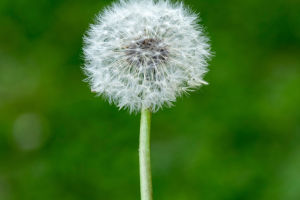Amanita muscaria, commonly known as the fly agaric, is one of the most iconic mushrooms in the world, instantly recognizable by its bright red cap with white spots.
Despite its whimsical appearance, this mushroom is known for its unique properties and the mysteries surrounding it.
Here is an in-depth look at the characteristics that make Amanita muscaria so intriguing.
1. Physical Appearance
The most striking feature of Amanita muscaria is its vibrant red cap, often dotted with white warts or spots. The cap size can range from 8 to 20 cm in diameter and has a distinct, domed shape that flattens out as it matures.
The red color can vary in intensity, sometimes appearing more orange or even yellow depending on environmental factors and the mushroom's age. The white spots on the cap are remnants of the universal veil, a protective layer that covers young mushrooms.
Underneath the cap, the gills are white, free from attachment to the stalk, and densely packed. These gills produce white spores, which help in identifying the species.
The stem, or stipe, of Amanita muscaria is typically white, ranging from 5 to 20 cm in height, with a bulbous base surrounded by a ring or skirt-like structure known as an annulus. The stem often features a series of concentric rings or scales near the base, giving it a textured appearance.
2. Habitat and Distribution
Amanita muscaria is widely distributed across the Northern Hemisphere, commonly found in temperate and boreal forests. It thrives in symbiotic relationships with various tree species, particularly birch, pine, and spruce.
This mycorrhizal association benefits both the fungus and the host tree, as the mushroom assists the tree in nutrient absorption while receiving sugars in return.
The mushroom typically appears in the late summer and autumn, emerging after rainfall. While its classic red-capped variety is most common in Europe and North America, Amanita muscaria also has subspecies and color variants.
For example, the yellow-orange Amanita muscaria var. formosa is more frequently found in North America.
3. Toxicity and Psychoactive Properties
Amanita muscaria is notorious for its toxic and psychoactive properties. The mushroom contains several active compounds, primarily ibotenic acid and muscimol.
Ibotenic acid is known for its neurotoxic effects, which can lead to symptoms such as nausea, vomiting, confusion, and in severe cases, seizures.
Muscimol, on the other hand, is a psychoactive substance that can cause hallucinations, euphoria, and altered states of perception.
Consumption of Amanita muscaria is generally considered dangerous and not recommended. The effects can vary widely depending on the amount ingested, the individual's sensitivity, and how the mushroom is prepared.
In some cultures, careful preparation methods are employed to reduce toxicity, but these practices do not eliminate all risks.
4. Cultural Significance
Amanita muscaria holds a prominent place in folklore, believes, and popular culture. In many cultures, particularly those in Siberia and northern Europe, the mushroom has been used in traditional rituals due to its psychoactive effects.
Its distinctive appearance has also made it a symbol in fairy tales, often depicted as the quintessential toadstool where magical creatures reside.
5. Ecological Role
Beyond its striking looks and psychoactive properties, Amanita muscaria plays an important ecological role.
As a mycorrhizal fungus, it forms symbiotic relationships with trees, contributing to the health and growth of forests.
This mutualistic interaction aids in nutrient exchange and helps trees survive in nutrient-poor soils, illustrating the mushroom's significant impact on forest ecosystems.
Amanita muscaria is a captivating mushroom known for its bright red cap, toxic properties, cultural significance, and ecological importance.
However, its toxicity serves as a reminder that while some mushrooms may appear enchanting, they often harbor potent chemicals that should be approached with caution.


